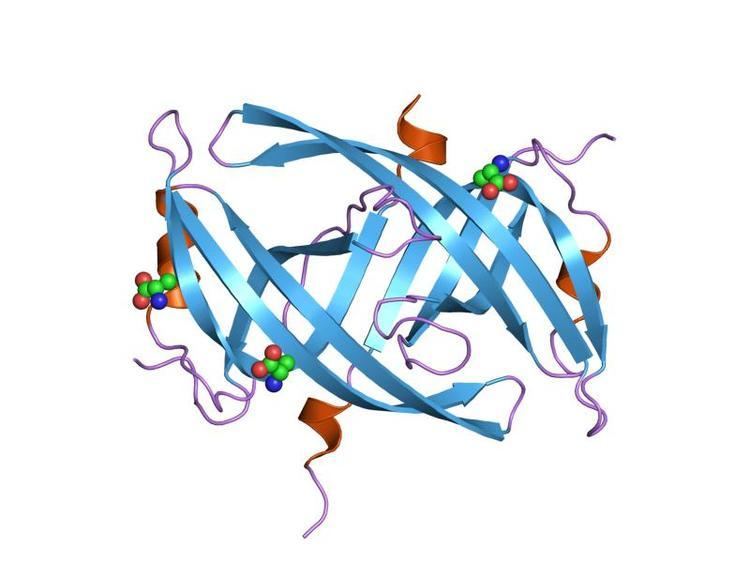Symbol SSB Pfam clan CL0021 PROSITE PDOC00602 | Pfam PF00436 InterPro IPR000424 SCOP 1kaw | |
 | ||
Single-strand DNA-binding protein (SSB) is a protein, 178 amino acids long, found in Escherichia coli (E. coli) bacteria, that binds to single-stranded regions of deoxyribonucleic acid (DNA). Single-stranded DNA is produced during all aspects of DNA metabolism: replication, recombination, and repair. As well as stabilizing this single-stranded DNA, SSB proteins bind to and modulate the function of numerous proteins involved in all of these processes.
Active E. coli SSB is composed of four identical 19 kDa subunits. Binding of single-stranded DNA to the tetramer can occur in different "modes", with SSB occupying different numbers of DNA bases depending on a number of factors, including salt concentration. For example, the (SSB)65 binding mode, in which approximately 65 nucleotides of DNA wrap around the SSB tetramer and contact all four of its subunits, is favoured at high salt concentrations in vitro. At lower salt concentrations, the (SSB)35 binding mode, in which about 35 nucleotides bind to only two of the SSB subunits, tends to form. Further work is required to elucidate the functions of the various binding modes in vivo.
Bacterial SSB
In molecular biology, SSB protein domains in bacteria are important in its function of maintaining DNA metabolism, more specifically DNA replication, repair, and recombination. It has a structure of three beta-strands to a single six-stranded beta-sheet to form a protein dimer.
